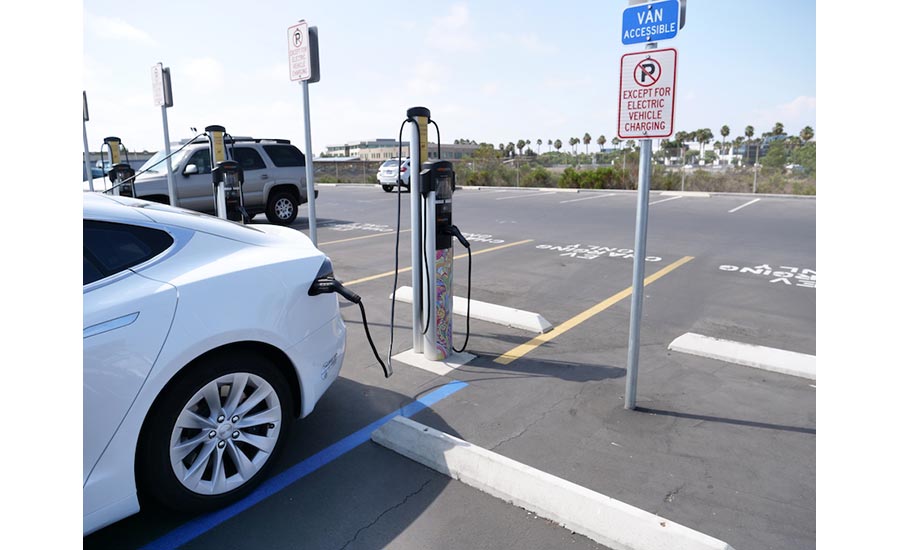
ENR asked Fernando Garcia and the team at HDR to explain to us how engineers and construction professionals fit into the rapidly expanding electric vehicle market and what the future of EVs might look like.
What role do engineering firms play in helping to establish electric vehicle infrastructure?
Engineering consulting firms can bring a wealth of expertise to help advance vehicle infrastructure deployments. Engineering firms that have a good working relationship with local electric service providers, combined with experience on local codes and permit requirements, can help support the execution of electric mobility projects. Some of this expertise includes planning, program management, community outreach, permit support, design for utilities and “behind-the-meter” design and construction support.
What kind of construction is involved in creating EV networks?
A small station with a couple of EV chargers may not require upgrades to the existing distribution circuit. If that’s the case, construction may only involve trenching in a parking lot for new conduits, along with installation of the electric vehicle supply equipment (also known as the charger). Larger and more complex projects may require transformer replacements, distribution circuit upgrades, and in the instance of a large fleet of buses or medium-heavy duty fleets, it could also mean a new substation and associated upgrades to the electric grid.
What are the common obstacles that have to be overcome to provide and plan for EV infrastructure?
Electric service providers and transmission companies are best positioned to make sure proper planning is conducted. Planning is critical, so the grid can accept the additional loads that electric vehicles bring, and to provide the least impact to the grid and to all consumers. One of the biggest challenges for EV drivers is the possibility they may be stranded if they can’t get access to public charging stations. In fact, for people living in apartments and multi-family homes not having charging access is a big obstacle. Being able to give electric service providers and transmission companies the means to develop a well-planned EV charging network would be significant; it would help ensure there are enough public charging stations to support the growth of EVs, without creating issues to the electric grid. In turn, it would be more affordable for consumers. Permitting is another big challenge – getting a streamlined process for approving public charging stations would accelerate the pace for how future projects can be executed.
How are EV station networks interconnected?
EV station networks developed for car manufacturers such as Tesla – as well as independent EV networks like EVGo and Electrify America – have their own software platform with standard protocols for communication. These platforms allow them to see all chargers within their network. Other EV network providers such as Greenlots, ChargePoint and EVConnect also have platforms to share information with station owners and electric service providers. Some utilities are developing load management solutions with EV networks to maximize the benefits that EV charging stations bring to the grid.
What types of charging infrastructure are there, and when do you expect that the technology will be standardized?
In the United States, the standard electrical connector that allows every carmaker (with the exception of Tesla) to be charged is SAE J1772 for Level 2 chargers and CCS-1 and CHAdeMO for DC Fast Charging. Standards are being developed for the arrival of larger batteries and technology that would allow for faster charging. This will be important for helping advance medium- and heavy-duty EVs. It is hard to predict when there will be a standard for all levels, but it’s certain that with all the ongoing collaboration and work, it’s in the near future.
Why can’t charging stations simply be built at current gas stations?
There are several challenges with the installation of charging stations at gas stations. Most electric vehicles on the road accept only up to Level 2 chargers, which means they would need to be parked for one hour to charge for 20-30 miles. With this in mind, current gas stations only have a few designated parking spaces for this activity. Also, most vehicles get only a small charge, because customers don’t spend a lot of time in these types of stores. If these parking spots were converted to have electric chargers, permitting may be an issue. Even if permits are granted, customers with non-electric vehicles who stop only for a quick purchase would claim those spots. However, as we see advancements in fast-charging, we will likely see a trend toward equipped gas stations. Shell announced recently it has plans to start installation of EV chargers at their retail outlets in the next five years.
How long does it take to charge a typical EV and how soon will there be rapid charge available?
It depends on what the car can accept. All EVs today accept Level 2 charging, and they usually can charge between 20-30 miles for each hour. DC Fast Charging in vehicles such as the Tesla and Porsche Taycan can accept charging that would enable 60 miles (and more) in 15 minutes. A lot of investment is being made in research and testing that could, in a couple of years, allow most EV owners to charge their vehicle in a similar amount of time. Impacts to the grid to accept these fast-pace charges will require electric service providers to effectively plan charging stations that can handle these loads.
How soon will we have intelligent transportation systems that take advantage of the capabilities of EVs and self-driving cars?
There are lot of advancements in self-driving technologies, and we are already seeing the impact they are having in how we use our vehicles, with cars already on the road that have some autonomous features. There are many manufacturers and suppliers already working on reaching highly automated vehicles (i.e., at 4 or 5 in the Society of Automotive Engineers’ level system). However, moving from lower levels of autonomy to highly automated remains a big lift due to the wide variety or roadway configurations, state of roadside infrastructure and the extent of roadway markings, among other things. Time-to-market will depend upon how quickly these technical issues can be overcome, as well as continued advances in legislative and policy actions. From a timing perspective, we believe it may be anywhere between 2025 and 2040.








